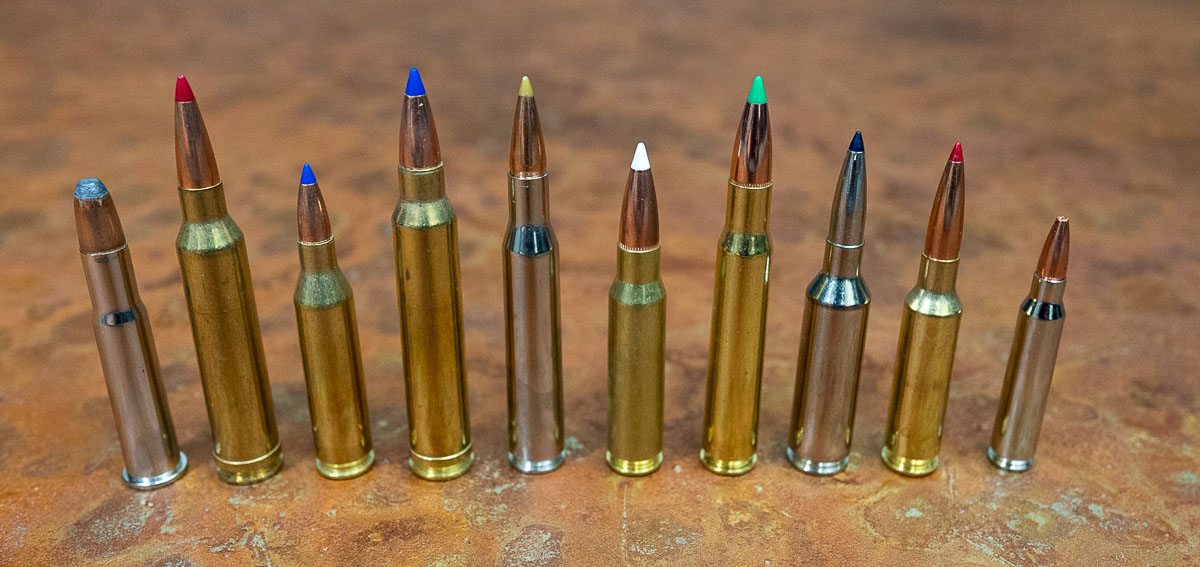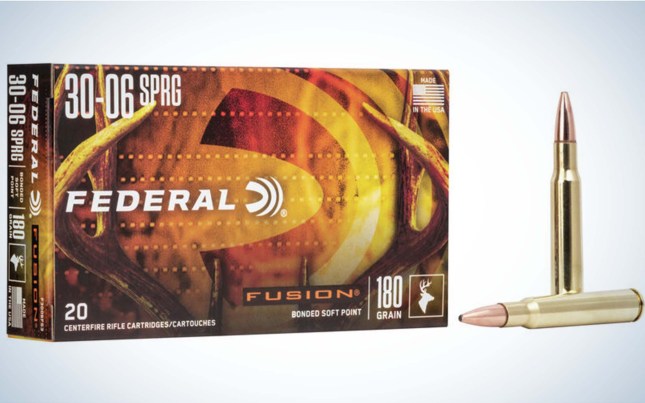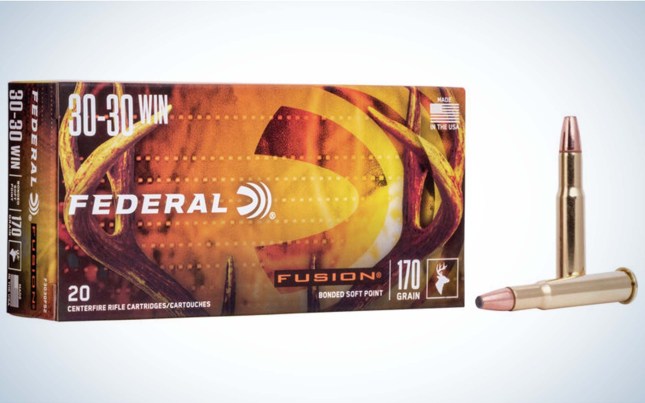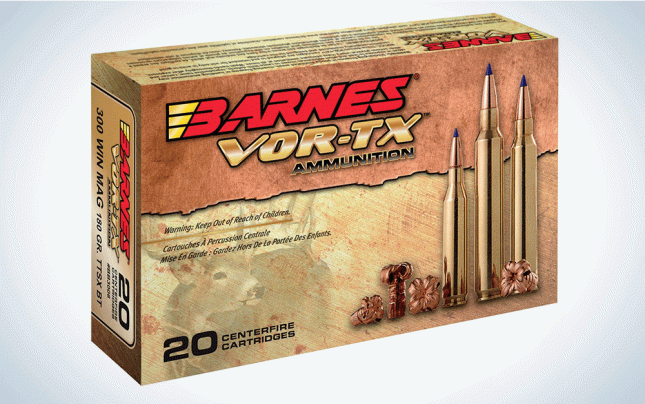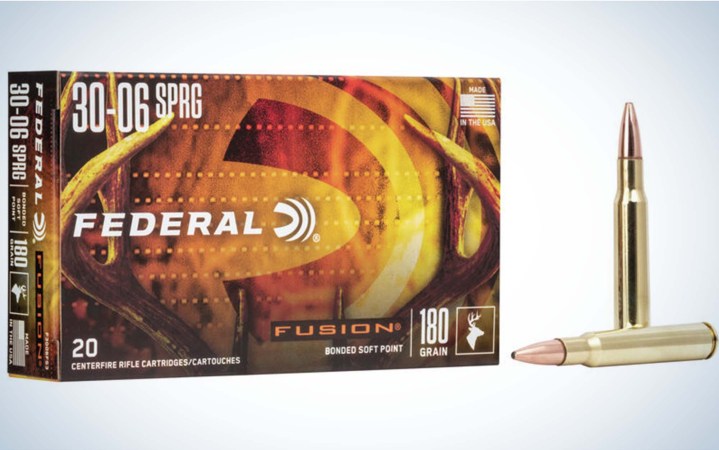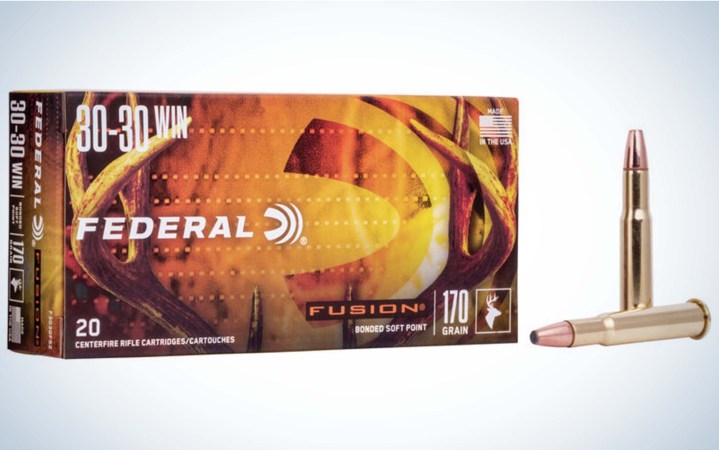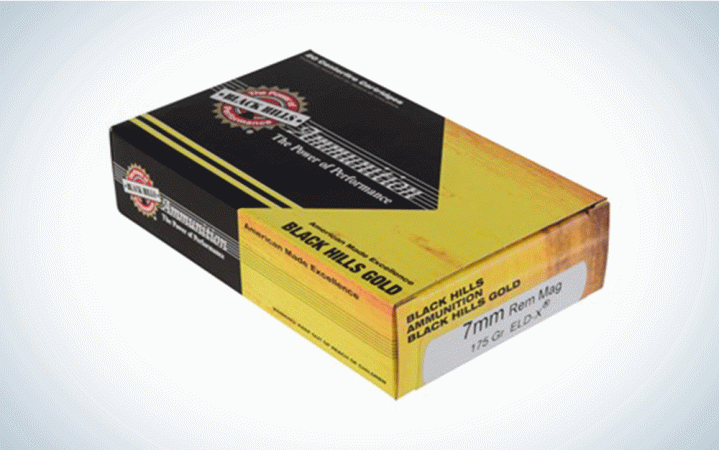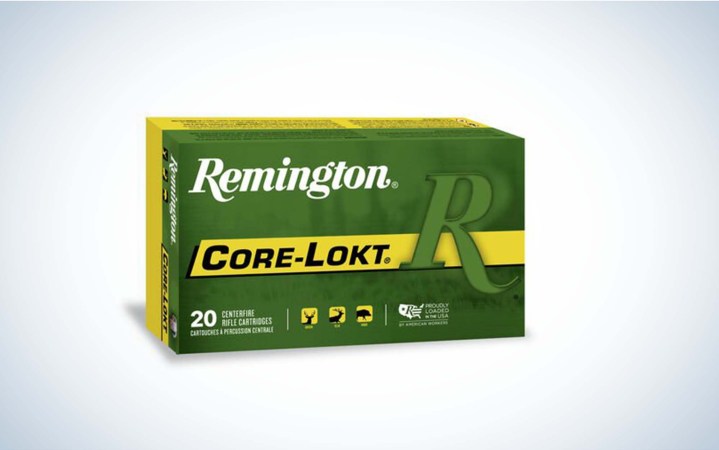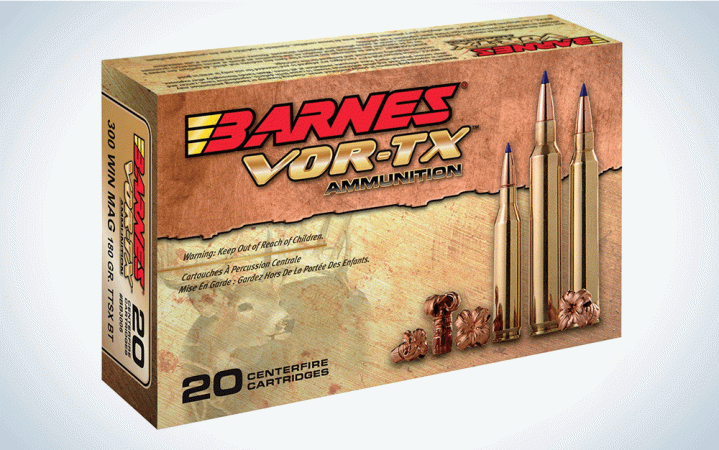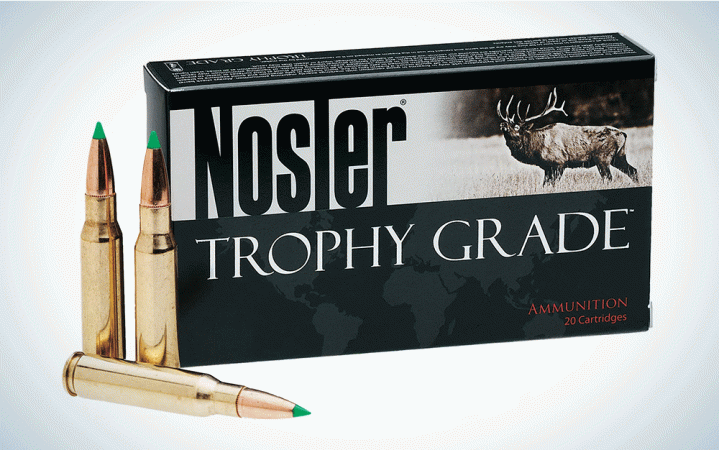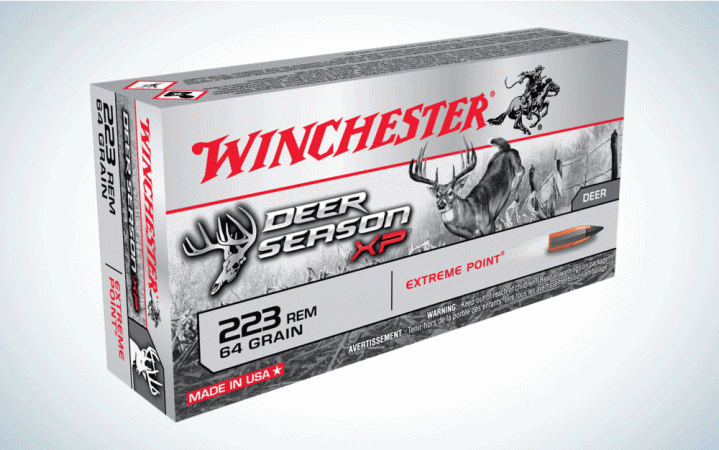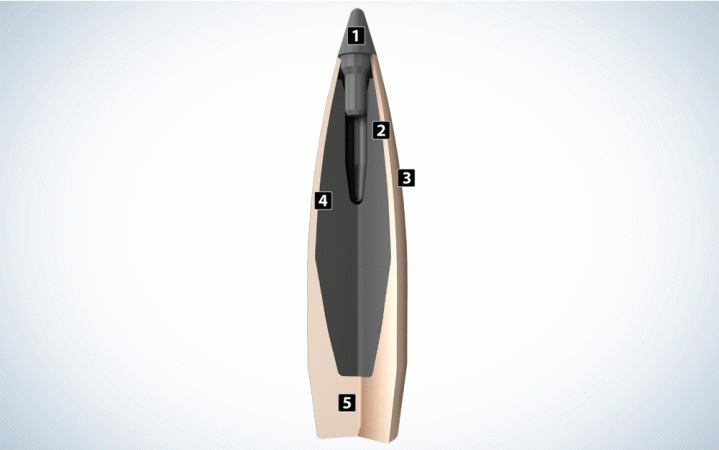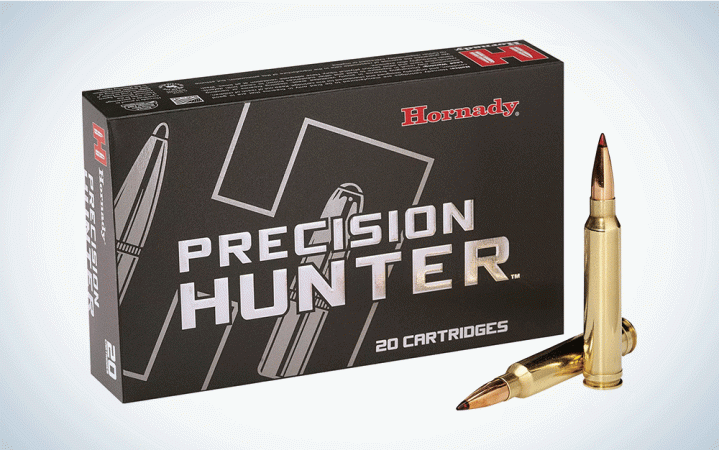We may earn revenue from the products available on this page and participate in affiliate programs. Learn More ›
Let’s get something clear, I’m writing about deer hunting calibers under duress. It isn’t that I have an issue with the subject. I just have a problem with the headline. Anyone with a scrap of ballistic sense knows that it should say the “best deer hunting cartridge.” But, alas, in a world where Google dictates our fate, we must follow the digital mob. And more people, by far, search for “best deer hunting calibers” than the technically correct “cartridge.” With that out of the way, let’s proceed.
How I Picked the Best Deer Hunting Calibers
This was no simple task. Being a top deer hunting caliber requires more than just knock-down power. These are the superstars of the whitetail world, with the numbers and longevity to support their claim to fame. Picking the best deer hunting cartridge also comes down to taste. And who has better taste in such matters than me, the Shooting Editor of Outdoor Life? I’m glad you agree.
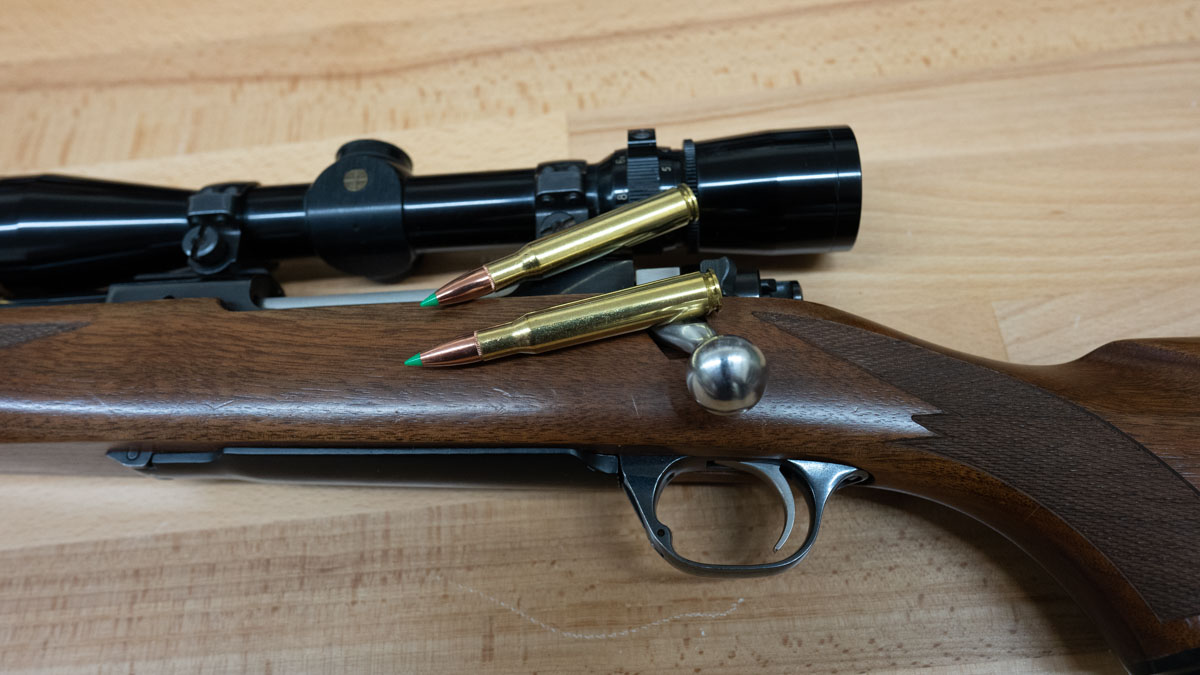
The Immortal: .30/06 Springfield
The .30/06 Springfield is the Captain America of big-game cartridges. It’s been around forever, packs a punch, and helped us defeat the Nazis in World War II. Without question, it is the number-one big-game round of the 20th Century. And it’s still going strong.
Like many other hunters, my first real deer rifle was chambered in the ought-six. Shooting 165-grain ballistic tips I put hundreds of pounds of corn-fed Michigan venison in the freezer over the years. I’ve also hunted with it across North America and in Africa, using 150-grain soft points, 180-grain Triple Shocks, 200-grain Trophy Bonded Bear Claws, 180-grain Accubonds, and a bunch of other bullets I can’t think of at the moment. You won’t find another round with a more versatile array of offerings. It really is the best all-around hunting rifle caliber.
Physics plays a big part in the .30/06’s success. It strikes a good balance between power and shootability. The recoil generated by the ought-six is at the upper end of what most shooters can manage without developing a debilitating flinch. And its terminal ballistics can handle all but thick-skinned dangerous game.
It’s certainly more gun than most whitetails require, but it gets the job done and carries with it a nostalgia that few cartridges can match. If it was good enough for Teddy Roosevelt, this deer hunting caliber is good enough for the likes of you and me.
Best Deer Ammo in .30/06 Springfield
Hornady American Whitetail 150-grain SP
Winchester 180-grain Ballistic Silvertip
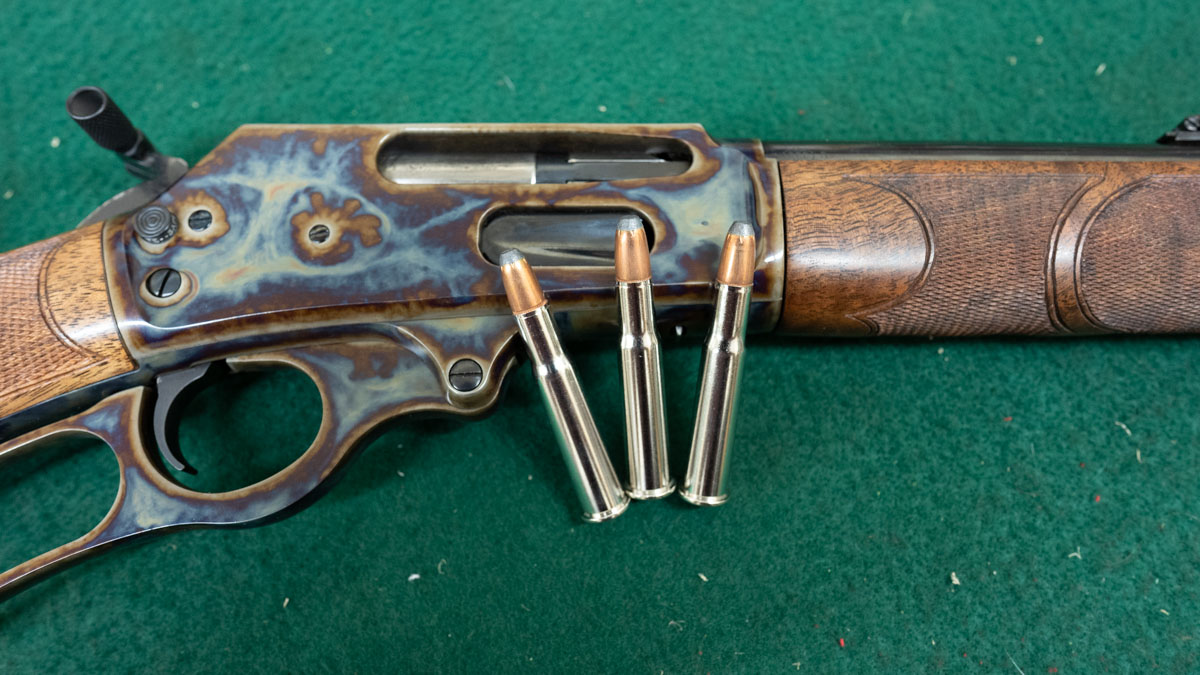
OG Lever-Action Caliber: .30/30 Winchester
Crowning one cartridge as the best whitetail caliber is a difficult task, but it is hard to imagine which would surpass the .30/30 Winchester. It was introduced in 1895 in conjunction with the Winchester Model 94 lever gun, and in a century and a quarter since then we’ve never witnessed a more successful rifle and cartridge combo.
How did it come to dominate? Few people realize it these days, but both the rifle and round were technical marvels. The ’94 was a fast-handling and reasonably accurate rifle with great balance and ergonomics and an impressive magazine capacity. The .30/30 was the first small-bore smokeless cartridge introduced in the United States and kicked off the era of high-power cartridges in America.
Lest you think it is some relic of your grandfather’s era, the .30/30 is still the top selling lever-action cartridge, beating out the .45/70 even though that round has seen many more new offerings in terms of rifles and ammunition.
Why does the .30/30 endure? Well, more than 7.5 million Model 94s have rolled off Winchester’s production lines, to say nothing of all the Marlin 336’s and (more recently) Henry Repeating Arms lever guns that have been chambered in .30/30. So there’s no shortage of rifles chambered in this round.
But these numbers don’t tell the entire story. The .30/30 has plenty of power to take on whitetail within 200 yards, making it suitable for 95 percent of shots on deer. It also produces about half the recoil of a .30/06, so it is a pussycat to shoot. Hunters who favor the .30/30 see no reason to go to anything else and consider it the best deer hunting caliber for 200 yards and in.
Great loads for the .30/30 include Winchester’s 150-grain PowerPoint, Hornady’s 160-grain FTX LeverEvolution, and the Federal Premium 150-grain Barnes TSX hollow point.
Best Deer Ammo In .30/30 Win.
Winchester 150-grain Powerpoint
Remington 170-grain Core-Lokt SP
Hornady 160-grain FTX Leverevolution
Winchester 170-grain Powermax Bonded
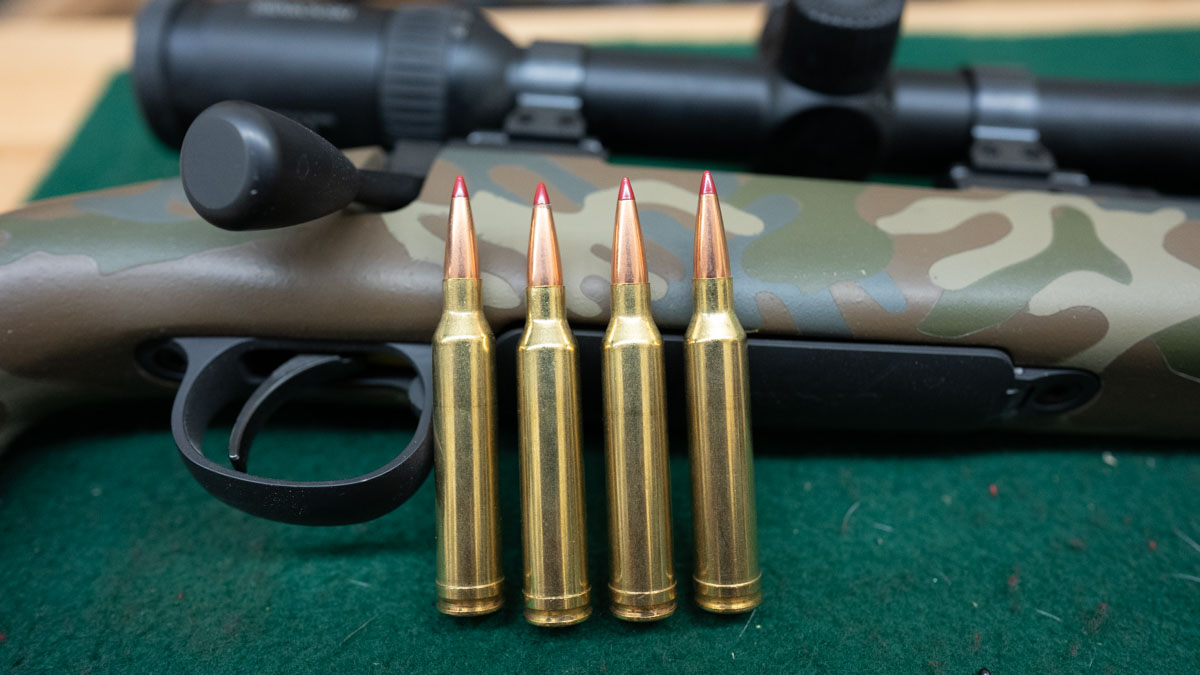
Old-School Metric: 7mm Remington Magnum
In the murky and distant past—meaning before the internet—gun and ammo companies would print catalogs, which you could grab for free at the local sporting goods store. For a broke kid, this was a godsend, since I was able to read about and obsess over all the rifles and cartridges I couldn’t afford while trying to pick the best deer hunting caliber.
Those catalogs had ballistic tables in the back, comparing the cartridges and listing their muzzle energy, velocity, and drop at various yardages. I didn’t need to be told that the “best” cartridge would be the one that moved the fastest and dropped less than the others. More often than not, that cartridge would be the 7mm Rem. Mag. I know a lot of other young, aspiring hunters felt the same way.
As it turned out, I used my ballistic crush on the first deer I shot—a spike whitetail buck at about 35 yards that had wandered out of a cedar swamp to feed on the grassy hill where I had posted up. Though that shot didn’t take advantage of the 7mm Mag’s flat trajectory, it convinced me of the cartridge’s superior qualities.
Since 1962, when the round was introduced in conjunction with the Remington 700, countless others have arrived at the same conclusion. You can see the numbers crunched here, but the main takeaway is that when shooting at a 10-inch target the 7mm Rem. Mag has a point-blank zero of 365 yards when sighted 3.9 inches high at 100 yards. That’s with a 175-grain spire-point hunting bullet at 2900 fps.
Performance like that in a rifle that has tolerable recoil and isn’t too heavy to lug around the hills was sure to catch the fancy of savvy hunters. For that reason, the 7mm Rem. Mag. managed to overcome the American shooter’s aversion to metric labeled cartridges and turn into a massive success for the last 60 years. It’s a solid contender for the best deer caliber out to 500 yards.
Best Deer Ammo In 7mm Rem. Mag.
Black Hills Ammunition 175-grain ELD-X
Remington 150-grain Core-Lokt Tipped
Hornady American Whitetail 139-grain SP Interlock
Winchester 150-grain Ballistic Silvertip
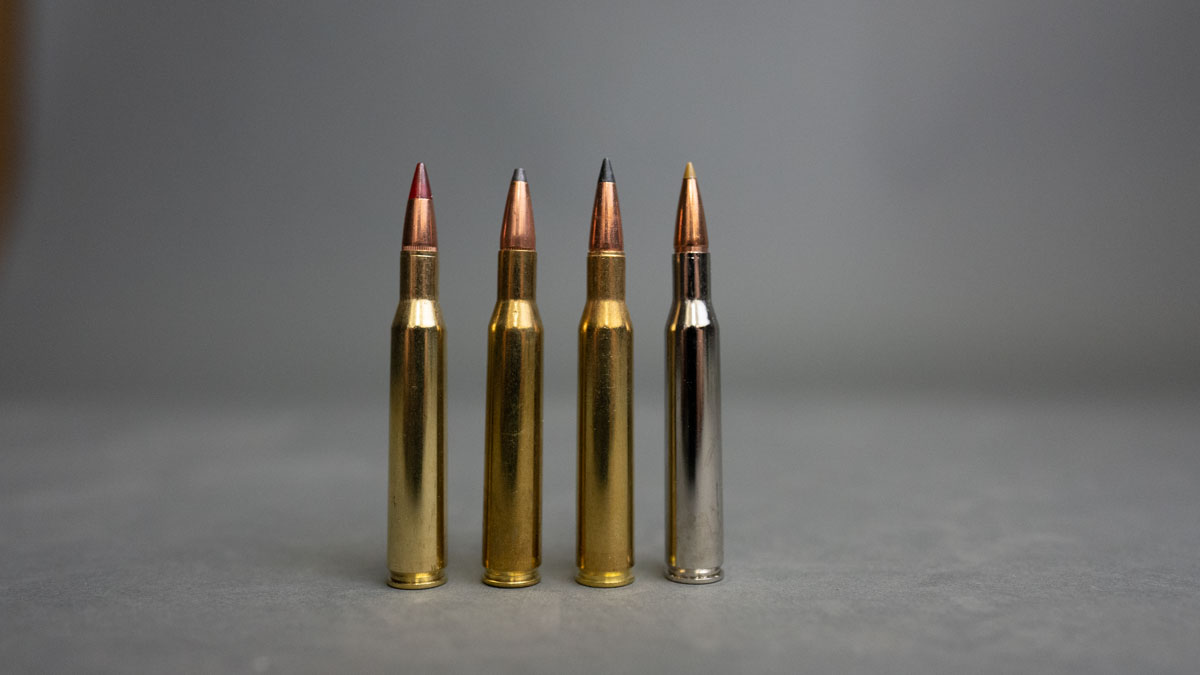
Jack O’Connor’s Legacy: .270 Winchester
There’s no way as shooting editor for this esteemed publication that I could fail to include the .270 Winchester on the list of contenders vying for the best deer hunting caliber. Winchester debuted the cartridge in 1925 along with the Model 54 rifle, which was the predecessor to the famed Model 70.
It might come as a surprise to some, but despite the gargantuan success of the .270 over the decades it was not an immediate hit with the shooting public. The .30/06 dominated with bolt-action rifles and the availability of cheap surplus ought-six ammo dissuaded shooters from trying this new-comer. In addition, some gun writers of the time questioned whether the .270 was as accurate as the .30/06 or delivered the velocities Winchester advertised, casting more doubt on the round. It did, however, catch the fancy of Jack O’Connor, who sang its praises in Outdoor Life, and as hunters tried the .270 they found they liked it very much indeed.
What drew O’Connor to the cartridge was the impressive ballistics of the round when shooting a 130-grain spire-pointed bullet. With a muzzle velocity of about 3140 fps, the .270 is forgiving on deer at unknown ranges. As O’Connor put it in his 1949 work, The Rifle Book: “Sighted to hit the point of aim at 200 yards with a scope sight, the 130-grain bullet drops only 5 inches at 300 yards, not enough to miss even a small deer with a hold in the center of the chest.”
For hunters looking for the best long range caliber of that time, O’Connor suggested sighting in at 300 yards. This puts the bullet about 3 inches high at 100, 4 inches low at 350, and just 10 inches low at 400.
Long before shooters were talking about ballistic coefficients, O’Connor hammered home the value of retained velocity down range. He illustrated many examples of how the .270 hit harder and had better killing power at longer distances thanks to aerodynamic efficiency of the 130-grain “sharp points.”
His outstanding prose, and experience in the field, tipped the scales in favor of the .270 to the point where it has run neck-in-neck with the .30/06 in terms of popularity for three quarters of a century. Even though the cartridge no longer enjoys the prominence it once did, it’s hard to imagine it slipping out of the top 10 deer calibers anytime soon.
Best Deer Ammo In .270 Win.
Remington 130-grain Core-Lokt Tipped
Winchester 130-grain Deer Season Copper Impact
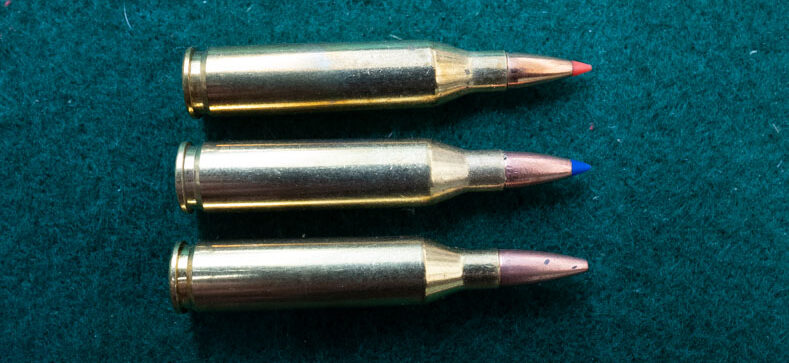
Benchrest Wildcat: .243 Winchester
In a sad twist of fate, the .243 Winchester has become known as a child’s deer cartridge. Talk about damned by faint praise. When state game departments established rules for allowable big-game rounds, a number put the minimum at 6mm caliber (.243 inch) cartridges, which is why I suspect it got that rap. Being the “minimum” it must be not as good as bigger, manlier cartridges, and therefore has been equated with youth rifles and first-time hunters.
It didn’t start life that way, however. It was the brainchild of a group of accuracy-obsessed riflemen, including former Field & Stream rifles editor Warren Page, who went on to establish benchrest shooting. Page had been fooling around with a number of 6mm wildcats in the late 1940s, but when Winchester introduced the .308 Winchester in 1952, he discovered the platform he’d been looking for. Page and his cohorts necked the .308 down to 6mm and gave birth to the .243 Winchester.
The .243 gained popularity so quickly that Winchester offered it as a factory round in 1955, an astonishingly quick rise from wildcat status to commercial production. From the get-go, deer hunters took a shine to the .243 Winchester. For the time, it represented the pinnacle of high-performance long-range accuracy. And the fact that its recoil didn’t threaten to detach your retinas with each trigger pull was a big bonus. Reloaders also appreciated that it didn’t require a cup full of powder to assemble a cartridge.
Fans of the .243 have helped it maintain its status as one of the best deer cartridges, though it never could dislodge the .30/06, .270 and .308 from the top slots. But as .243 shooters know, it is an ideal one-rifle solution for hunters who chase deer and predators and is arguably the best pronghorn antelope round ever.
The best bullets for deer are those weighing 90 grains or more. Those heavy-for-caliber projectiles penetrate well and shoot flat and do a decent job of bucking the wind thanks to their high ballistic coefficients. Nosler’s 90-grain AccuBond, Federal’s 95-grain Fusion, Hornady’s 103-grain ELD-X, and Berger’s 105-grain Target Hybrid are all excellent bullets. For non-lead bullets, the 85-grain Barnes TSX and Federal 85-grain Trophy Copper deliver outstanding terminal performance.
Best Deer Ammo In .243 Win.
Winchester 95-grain Deer Season
Black Hills Ammunition 80-grain Hornady GMX
Remington 100-grain Core-Lokt Tipped
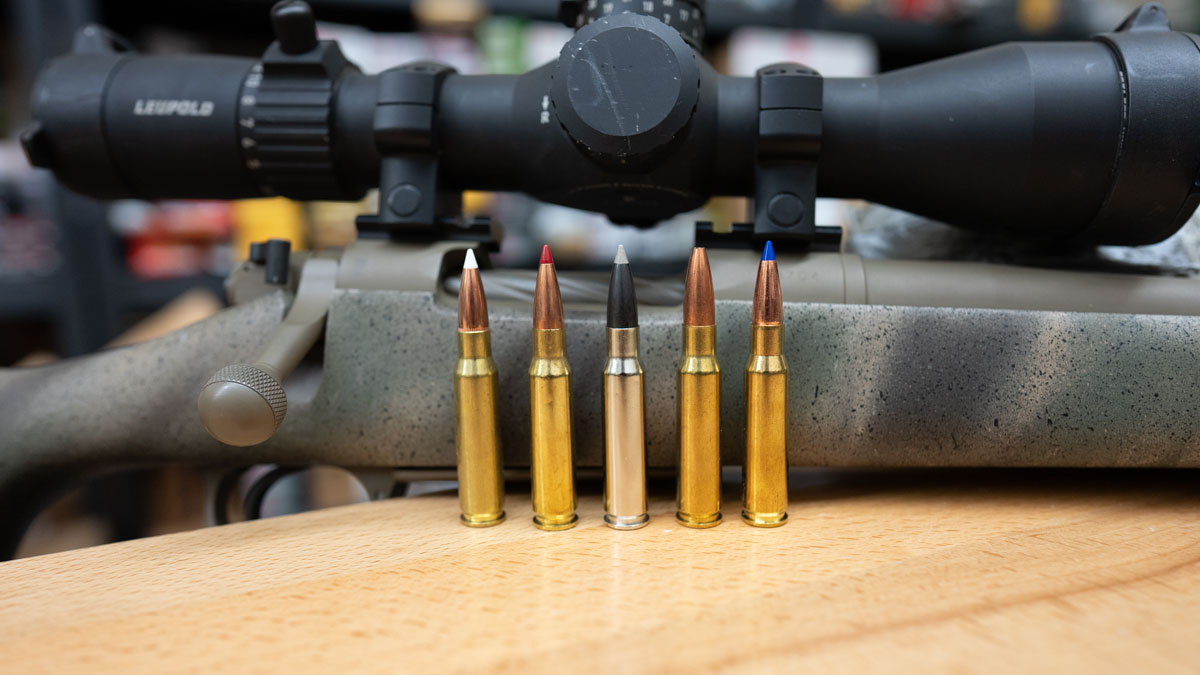
Battlefield Proven: .308 Winchester
The fastest way for a new cartridge to gain widespread acceptance with the shooting public is for the military to adopt it. That’s what happened with the .308 Winchester. Frankfort Arsenal designed a prototype cartridge called the T65 in an effort to approximate .30/06 (the U.S. service round at the time) performance in a shorter cartridge. Winchester thought the project held promise for civilian shooters and hunters and in 1952 trotted out the .308 Winchester. Since the wheels of government bureaucracy churn slowly, it wasn’t until 1954 that the military version—the 7.62x51mm NATO—was unveiled.
The .308 Winchester is certainly the most successful short-action big-game hunting round in history. It’s been used worldwide on everything short of dangerous game and is a perennial favorite among whitetail hunters.
In a well-constructed action, it is one of the most accurate rounds out there and is capable to 500 yards on deer and other big game. As I’m sure you know, the military has relied on it for many years in a variety of sniper rifles and in that role, it is effective to 1,000 yards.
For hunters the most common bullet choices are those from 150 to 180 grains. On the lighter end, you’ll find bullets like the 150-grain Barnes TSX and 150-grain Trophy Copper. The 165-grain Nosler AccuBond and 165-grain Trophy Bonded Tip both occupy a sweet spot in the middle. And the heavyweight offerings include the 180-grain Nosler Partition and Federal’s new 175-grain Terminal Ascent, which is designed for long-range hunting. All these projectiles work great on deer and larger game.
A good friend of mine who is a shooting nerd and avid Western hunter, uses a .308 on the coastal blacktails he hunts in his home state of Oregon. The timber covered mountains have patches of clearcuts where the deer hang out and long cross-canyon shots are the norm. To anchor the deer quickly, he needs a bullet that will put them down, but the bullet must also be accurate enough to make those shots. For him, the .308 is the answer, combining the desired knock-down power with pin-point precision. Most deer hunters don’t encounter such technical shooting scenarios, but the .308 is one round that can handle most any task you’d ask of it.
Read Next: Best .308 Hunting Rifles
Best Deer Ammo In .308 Win.
Federal Premium 165-grain Sierra Gameking
Federal 175-grain Terminal Ascent
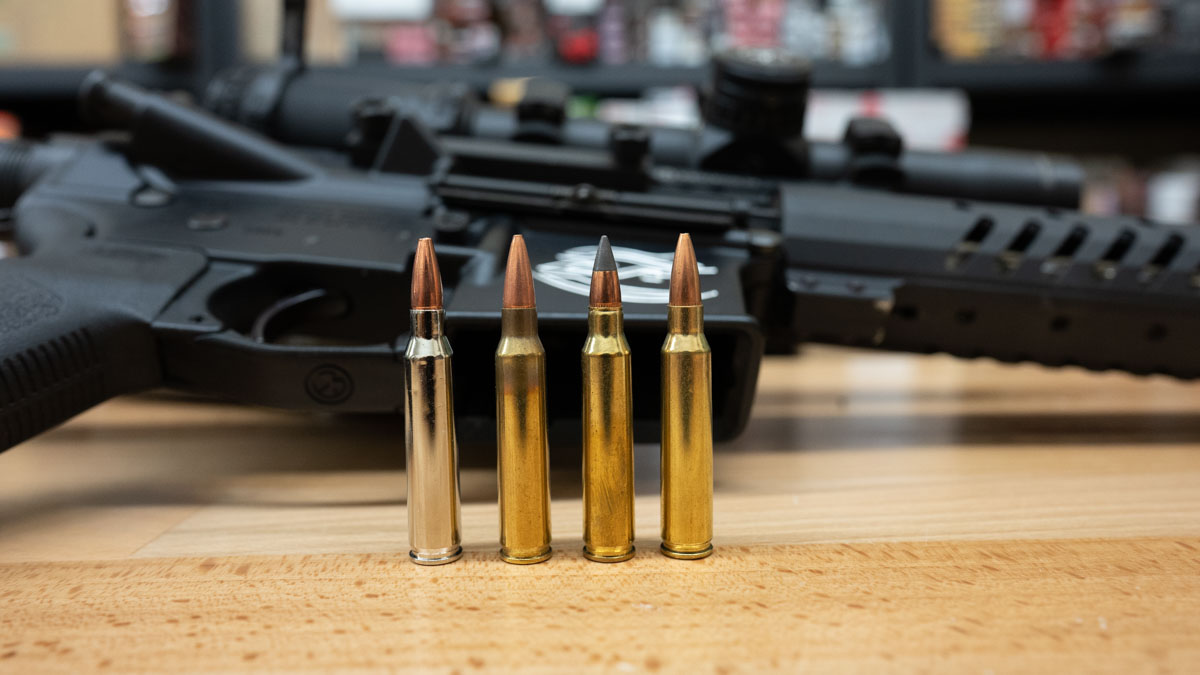
The Underdog: .223 Remington
“The only hunters who don’t think a .223 will kill a deer are those that haven’t shot a deer with a .223.” Those words of wisdom were uttered by a friend of mine on a phone call some years back while discussing our favorite whitetail rounds—and I couldn’t agree more with the sentiment.
I think a lot of hunters feel squeamish about shooting a whitetail with a .223, and in several states a .223 doesn’t meet the minimum caliber requirements. But the fact is that with the right bullet a .223 is ample medicine for any whitetail buck out there.
I’ll admit, I used to be in the no-way camp. But then I took my 10-year-old son on his first deer hunts. I equipped him with one of my 3-gun AR-15 carbines with an adjustable stock and he smoked the hell out of every deer that crossed his path, including some very large-bodied bucks in Nebraska.
I was impressed by how decisive those kills were and decided to give it a try myself and for a couple seasons notched a handful of deer tags with a .223. I used a number of bullets and among my favorites are Barnes’ 62-grain TSX, Sig Sauer’s 60-grain HT and 77-grain OTMs. Is the .223 the best AR-15 deer hunting caliber? I think that when you consider how simple it is to build a tack-driver of a .223 (just go with a 1:7 twist for these heavy bullets) and how well an AR balances with the round that the answer is yes. The ample availability of inexpensive ammo (at least during normal times) is another factor in favor of the .223. It’s certainly what I’d consider the best deer hunting caliber with least recoil generated.
Read Next: Best 5.56 Ammo
Best Deer Ammo In .223 Rem.
Winchester 64-grain Deer Season
Black Hills Ammunition 62-grain Triple Shock
Federal Premium 60-grain Nosler Partition
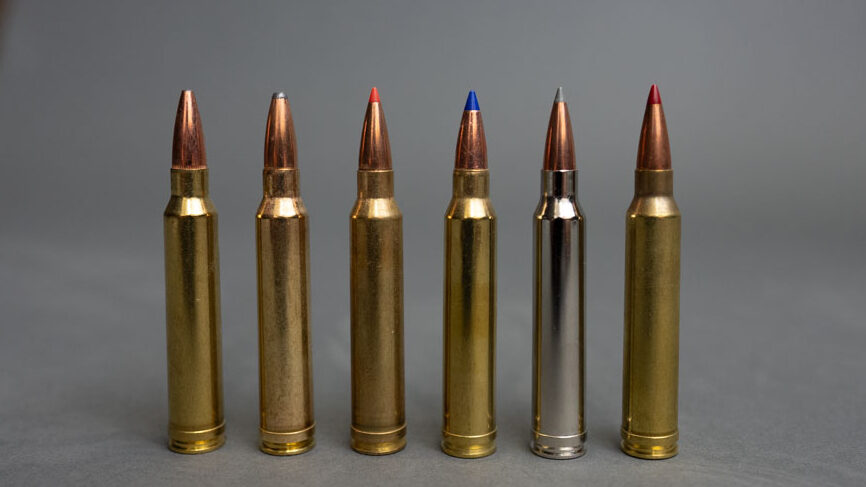
The Boomer: .300 Winchester Magnum
If the .223 Remington is at one end of the ballistic spectrum for deer hunters, then the .300 Winchester Magnum bookends the other. This potent round brings deer-killing capability at every reasonable (and even unreasonable) distance a hunter might shoot. But with the significant caveat that the hunter must be able to handle the .300’s sharp recoil. Sad to say, many hunters cannot.
We’ll leave that aside for the moment. Let’s first look at the virtues of this belted .30-caliber magnum. Introduced in 1963, the .300 Win. Mag. was based off the .338 Win. Mag., which was, in turn, developed from the granddaddy of all belted magnums, the .375 H&H. At this time, the .300 Win. Mag. faced some stiff competition among .30-caliber magnums. One advantage it had over the most popular .30, the .300 H&H Magnum, is that it could be chambered in a standard long-action rifle, whereas the .300 H&H required a magnum-length action to run. The other .30s of the time—the .308 Norma Magnum and the .30-338 Winchester (arguably a better design) didn’t have the same support from gun makers as the .300 Win. Mag., so they fell behind with the shooting public.
The original loads for the .300 Winchester were with 150- and 180-grain bullets. Published velocities put them at 3400 fps and 3070 fps respectively giving the round a 350 to 400 fps advantage over the .30/06 with the same bullet weights. At 500 yards, the .300 Win. Mag. shoots about 15 inches flatter than the ’06 with a 180-grainer, so you can see the appeal. Where the .300 Win. Mag. especially shines is with some of the excellent heavy-for-caliber bullets in the 190- to 212-grain range.
For instance, Hornady’s 200-grain ELD-X load at 2850 fps from a 24-inch barrel and a 200-yard zero hits just 20 inches low at 400 and 40 inches at 500. Even out past 500 yards, this round is carrying more than 2000 foot-pounds of energy.
Where you pay the price is with recoil. The felt recoil from a .300 Win. Mag. is about 30-percent greater than from a .30/06. Unless that rifle carries some extra weight or a good muzzle brake, it will be difficult to shoot well. And no one practices as much as they should with a rifle that beats them up, compounding the problem. The result is lousy shot placement on game.
Fans of the big magnums insist that a benefit to these boomers is that they are more forgiving with bullet placement than lesser cartridges. Personally, I think that advantage is negated by the poorer shooting one sees with these thumpers, but to each his own.
For a shooter who has actually mastered one of these rifles, it is perhaps the best deer and elk rifle caliber available.
Best Deer Ammo In .300 Win. Mag.
Winchester 190-grain Accubond LR
Remington 180-grain Swift Scirocco
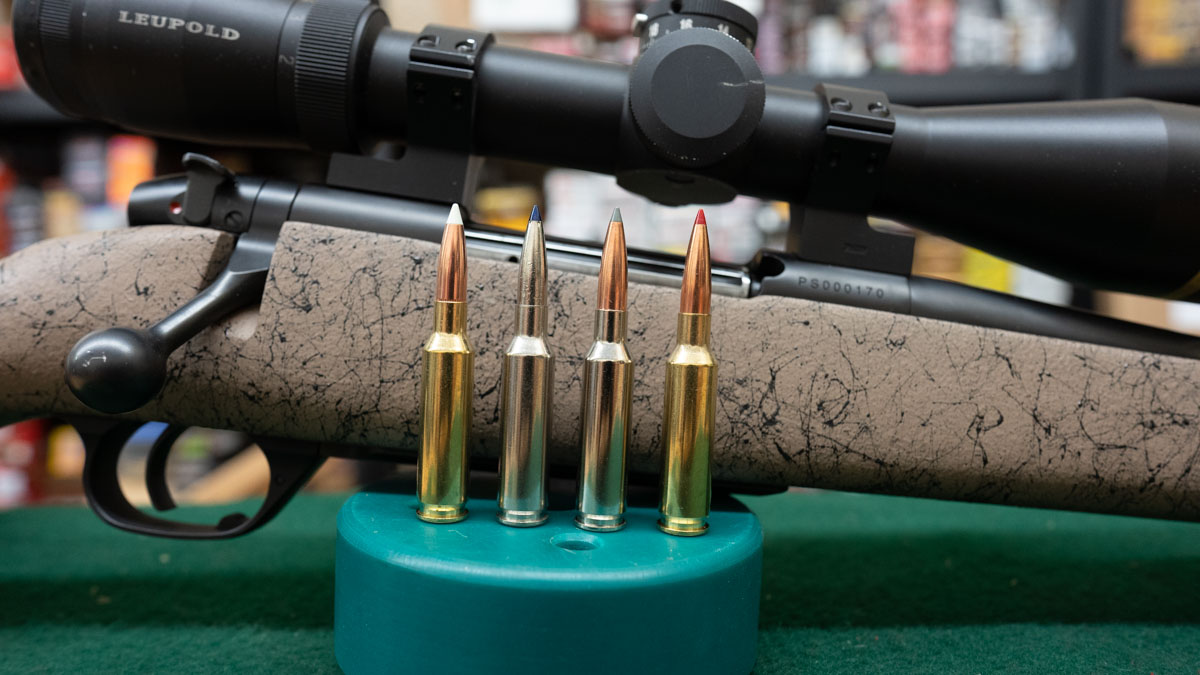
The Newcomer: 6.5 Creedmoor
You didn’t think we could make it through a list of the best deer calibers and not talk about the 6.5 Creedmoor, did you? I’ll confess, I find the red-faced rage that some folks harbor against the 6.5 Creed amusing. Most detractors say that the 6.5 Creedmoor can’t do anything that their grandpa’s deer rifle can’t do and leave it at that. Other, more technically oriented, critics argue the Creed doesn’t perform as well as other .264-caliber rounds like the 6.5×55 Swede, the .260 Remington, 6.5-284 Norma Mag., and the .264 Winchester Mag. Neither line of argument is convincing.
How often do you hear the term match-grade thrown around? Match-grade rifles. Match-grade barrels. Match-grade ammunition. What does it mean? Well, for something to be match grade it must—wait for it—win shooting matches. Otherwise, it is meaningless marketing blather.
One only need look at the NRL Hunter series, where shooters must use hunting-style rifles to shoot real-world scenarios, to understand that not every deer hunting caliber is created equal.
The 6.5 Creedmoor dominates in NRL Hunter because it combines outstanding accuracy and shootability with bullets that are excellent on big game.
One key facet of “shootability” is the shooter’s ability to manage the rifle’s recoil and spot where their bullet went and make an accurate follow-up shot if needed. Larger cartridges, even something as relatively mild as the .308 Winchester, can’t compete with the 6.5 Creedmoor on this point.
As for the arguments concerning the other 6.5 cartridges—and I have experience with them all—they, too, don’t hold up. Since these are technical arguments—mostly concerning the ability of those cartridges to drive a given bullet faster—it requires a technical rebuttal.
The genius of the 6.5 Creedmoor is that it is such a well-balanced cartridge that is designed to maximize its accuracy potential. The fast twist rate (1:8 inches) works better with the aeroballistically efficient 130-grain (and larger) 6.5mm bullets than the 1:9 twist on the other 6.5s. The neck and chamber dimensions are tighter and the leade in the throat is at an optimized (1.5 degree) angle, so the case is more inherently accurate than those other rounds. Compared to the Swede, the Norma and the Win. Mag., it is a short-action cartridge, which is another accuracy-enhancing element in its favor.
The sum of all these details is why the 6.5 Creedmoor winning matches, and why the other 6.5s don’t.
Do these advantages translate into better performance on game? In most cases, no. When the shots aren’t challenging, then there’s not meaningful difference. But in those cases where the shots are longer and you need every bit of accuracy your rifle and cartridge can muster, then, yes, the 6.5 Creed excels and in my mind is the best deer hunting caliber of the modern era.
You can read more about the evolution of the 6.5 Creedmoor and how it came to dominate here.
Best Deer Ammo In 6.5 Creedmoor
Federal 130-grain Terminal Ascent
Nosler 140-grain Ballistic Tip
Remington 129-grain Core-Lokt Tipped
Black Hills Ammunition 120-grain GMX
Read Next: Best 6.5 Creedmoor Rifles
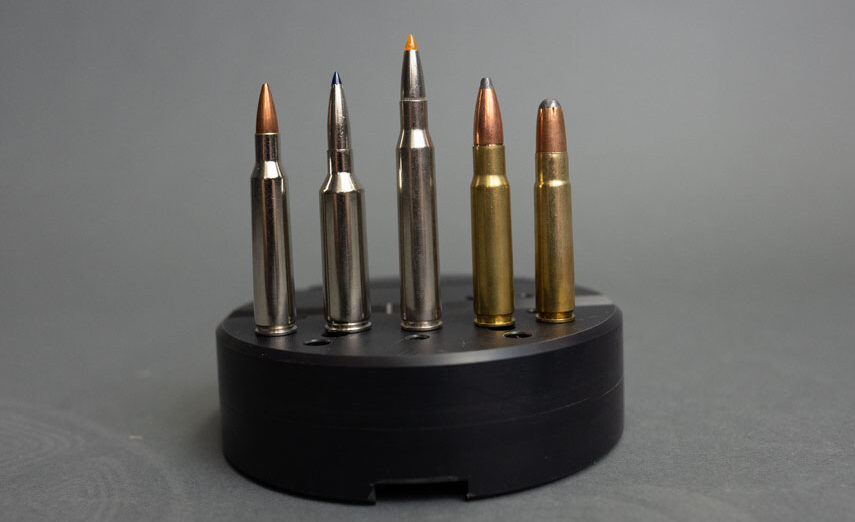
More of the Best Deer Hunting Calibers—That Didn’t Make the List
There are a number of great deer cartridges that didn’t make the final cut for this story. Many of them are personal favorites, which vexes me to no end—but I couldn’t see them dislodging any of the rounds we’ve talked about as the best deer hunting caliber.
The one 6.5 I didn’t mention in the writeup on the 6.5 Creedmoor is the even-newer 6.5 PRC. Whether this round achieves long-lasting success is an open question. But it is an outstanding cartridge that delivers great accuracy and has a little more gas in the tank than the 6.5 Creed. It pushes bullets about 250 fps faster and has been winning ELR (extreme long-range matches) even when going head-to-head against big .30s and .33s like the .300 Norma, .300 PRC and .338 Lapua. It definitely hits above its weight class and is my number one choice for open-country hunting.
The .280 Remington is impossible not to love. It’s the scrappy underdog that elbowed its way in between the .270 and .30/06 and has managed to hang in there despite the dominance of those rounds. Don’t bother with the Ackley “improved” AI version. It doesn’t give you anything other than excess pressure.
There are several quarter-bores that are great deer rounds. The .257 Roberts, which is continuing its slide into obsolescence, is near and dear to my heart. And the .25/06 and .257 Weatherby are also wonderful on deer. But fewer and fewer hunters look to the .25s these days.
In a lever gun, I’ve always been partial to the .35 Remington. The .30/30 is king, but the .35 Rem. packs a bit more punch and watching a big buck flop over after taking a 200-grain round nose from one is a sight to behold.
Read Next: 10 Best Deer Hunting Guns Today
The .338 Federal is another good round that’s been lost in the mix. It was introduced in 2006 amid a flurry of cartridge introductions and never quite caught on. For about 3 years I used it extensively, on everything from deer, bear, moose and elk and was impressed by its performance. I agree with my friend Ron Spomer that it is probably the best deer cartridge you’ve never tried.
Best Deer Ammo In 6.5 PRC
Federal 130-grain Terminal Ascent
Nosler 140-grain Ballistic Tip
Best Deer Ammo In .257 Roberts
Norma American PH 100-grain SP
Best Deer Ammo In .280 Rem.
Federal Premium 140-grain Trophy Bonded Tip
Best Deer Ammo In .35 Remington
Hornady 200-grain FTX Leverevolution
Best Deer Ammo in .338 Federal
Federal 200-grain Trophy Bonded Tip
